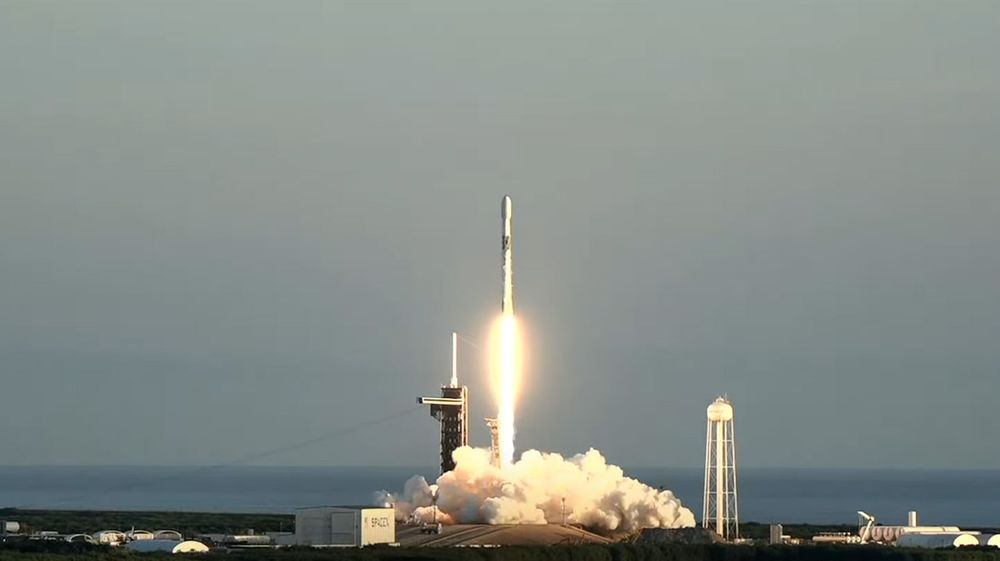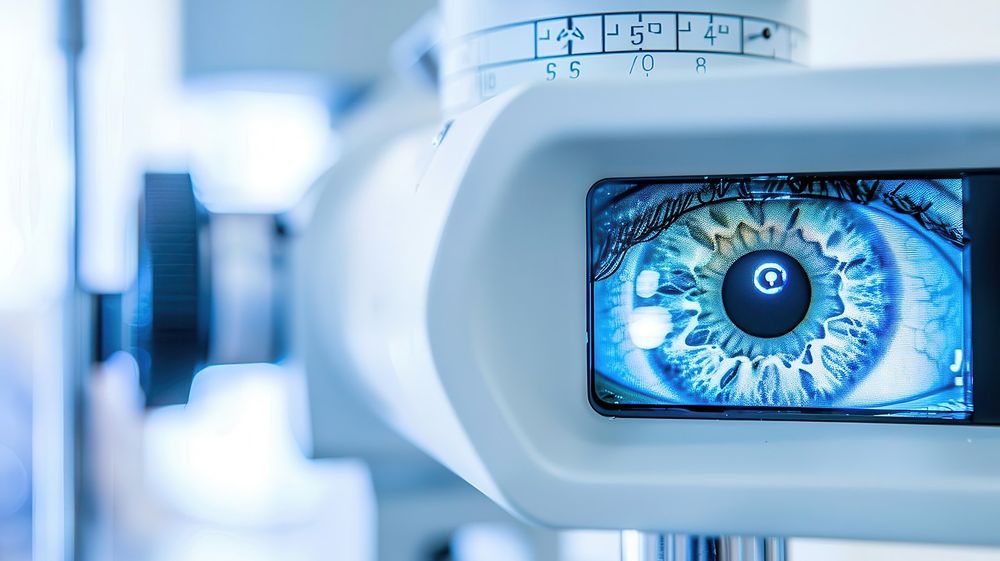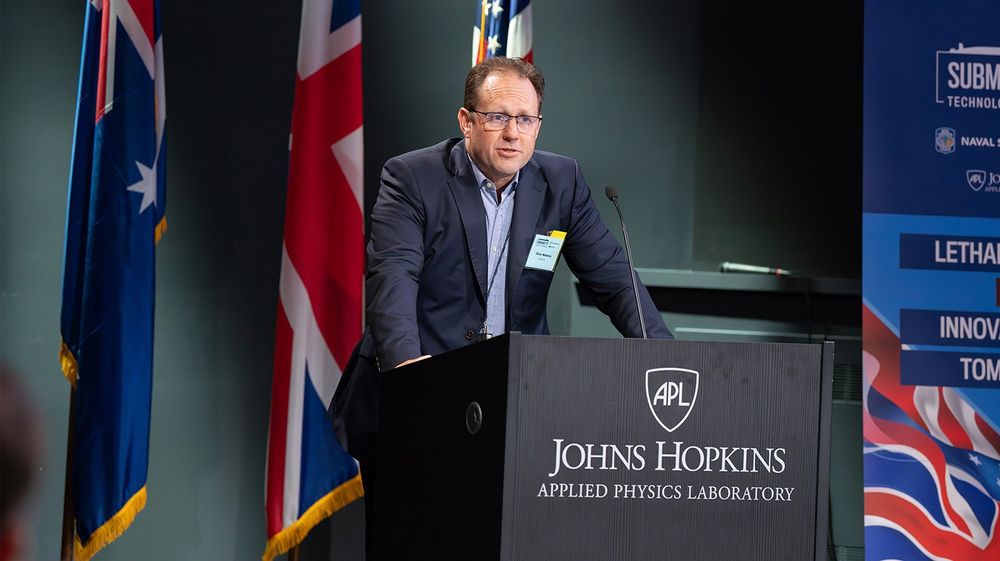
Johns Hopkins APL
@jhuapl.bsky.social
930 followers
11 following
84 posts
Johns Hopkins Applied Physics Laboratory (APL) is a not-for-profit center for engineering, research & development. Reposts/follows ≠ endorsements
Posts
Media
Videos
Starter Packs
Johns Hopkins APL
@jhuapl.bsky.social
· Sep 24

Engineering Tomorrow’s Quantum Computers
Researchers have touted the revolutionary potential of quantum computers to take on otherwise intractable challenges, like modeling complex molecular behavior for drug discovery or factoring enormous ...
jhuapl.link
Johns Hopkins APL
@jhuapl.bsky.social
· Sep 24

NASA Launches IMAP Mission to Study the Heliosphere and Better Understand Space Weather
NASA’s Interstellar Mapping and Acceleration Probe (IMAP) lifted off aboard a SpaceX Falcon 9 rocket from the agency’s Kennedy Space Center in Florida at 7:30 a.m. EDT.
jhuapl.link
Johns Hopkins APL
@jhuapl.bsky.social
· Sep 19

NASA’s IMAP Mission Passes Major Prelaunch Milestone
NASA’s Interstellar Mapping and Acceleration Probe (IMAP) completed its Flight Readiness Review on Sept. 18, which certifies its readiness to initiate final launch preparation activities. IMAP is targ...
jhuapl.link
Johns Hopkins APL
@jhuapl.bsky.social
· Sep 17

An Accelerated Paradigm for Developing Mission-Critical Materials
Scientists and engineers at Johns Hopkins APL are applying artificial intelligence and robotics to dramatically accelerate the process of designing, testing and optimizing metallic components for the defense industrial base.
jhuapl.link
Johns Hopkins APL
@jhuapl.bsky.social
· Sep 17

Nano-engineered Thermoelectrics Enable Scalable, Compressor-Free Cooling
Researchers at Johns Hopkins APL, in collaboration with Samsung Research, have unveiled a breakthrough in solid-state cooling technology, doubling the efficiency of today’s commercial systems. Driven ...
jhuapl.link
Johns Hopkins APL
@jhuapl.bsky.social
· Sep 10

Training Robots to Plan and React Like Humans
Johns Hopkins APL researchers are advancing robotic perception by using artificial intelligence to equip autonomous agents with the capacity to make sense of unstructured environments — and make plans...
jhuapl.link
Johns Hopkins APL
@jhuapl.bsky.social
· Sep 8

Mara Named Head of Force Projection Sector at Johns Hopkins APL
Andrew Mara has been named head of the Force Projection Sector at APL. Mara joined APL in 2023 as the head of the National Security Analysis Department, where he led the development of advanced techni...
jhuapl.link
Johns Hopkins APL
@jhuapl.bsky.social
· Sep 4

Thompson Named Mission Area Executive for National Security Analysis at Johns Hopkins APL
Angela Thompson has been appointed National Security Analysis mission area executive at APL. Since joining the Lab in 2007, she has served in key leadership roles guiding programs that advance U.S. na...
jhuapl.link
Johns Hopkins APL
@jhuapl.bsky.social
· Sep 3

Provisions From Pond Water? Researchers Leverage Biomanufacturing to Produce Food
Johns Hopkins APL researchers are exploring ways to produce food on demand by using readily available water to grow edible microbial products — an effort that could have significant implications for d...
jhuapl.link
Johns Hopkins APL
@jhuapl.bsky.social
· Sep 3

At-Home ‘Retinal Selfies’ May Provide a Window on Health
Researchers at Johns Hopkins APL and the Johns Hopkins Medicine Wilmer Eye Institute in Baltimore are designing a retinal imaging platform in the form of wearable eyeglasses that has the potential to ...
jhuapl.link
Johns Hopkins APL
@jhuapl.bsky.social
· Sep 2

37th Annual Submarine Technology Symposium Advances Undersea Collaboration and Innovation
More than 600 participants from across the submarine force, allied nations, industry and academia gathered at Johns Hopkins APL for the 37th Submarine Technology Symposium. The symposium provided a fo...
jhuapl.link
Johns Hopkins APL
@jhuapl.bsky.social
· Aug 27

U.S. Air Force, Johns Hopkins APL Hypersonic Experiment Soars and Collects Vital Data
The BOLT-1B experiment collected data about boundary layer transition (the flow of air around the skin of a hypersonic vehicle), which increases hypersonic vehicle drag and aerodynamic heating. That d...
jhuapl.link
Johns Hopkins APL
@jhuapl.bsky.social
· Aug 21

Johns Hopkins APL’s Next-Generation Solid-State Refrigeration Technology Wins 2025 R&D 100 Award
APL researchers won a 2025 R&D 100 award for their nano-engineered materials called CHESS that significantly improve the efficiency of thermoelectric cooling devices. Their breakthrough nearly doubles...
jhuapl.link
Johns Hopkins APL
@jhuapl.bsky.social
· Aug 20

A New Path to Noninvasive Brain-Computer Interface
A new high-resolution neural recording method developed by Johns Hopkins APL and the School of Medicine detects neural activity through the skull at unprecedented resolutions, expanding possibilities ...
jhuapl.link
Johns Hopkins APL
@jhuapl.bsky.social
· Aug 14

Johns Hopkins APL Technology Fuels Startup Launched to Deliver Safer, More Effective Pain Management
A new startup, BIOPAC Medical Systems LP, has been launched to advance a novel neural blockade monitoring technology toward clinical use. The venture is a collaboration between APL, the Johns Hopkins ...
jhuapl.link
Johns Hopkins APL
@jhuapl.bsky.social
· Aug 13

Johns Hopkins APL Team Applies Expertise to Homeland Defense Wargame
A team from APL played a central role in a recent Defense Department wargame that addressed the challenges of protecting logistics infrastructure against growing adversarial threats.
jhuapl.link







